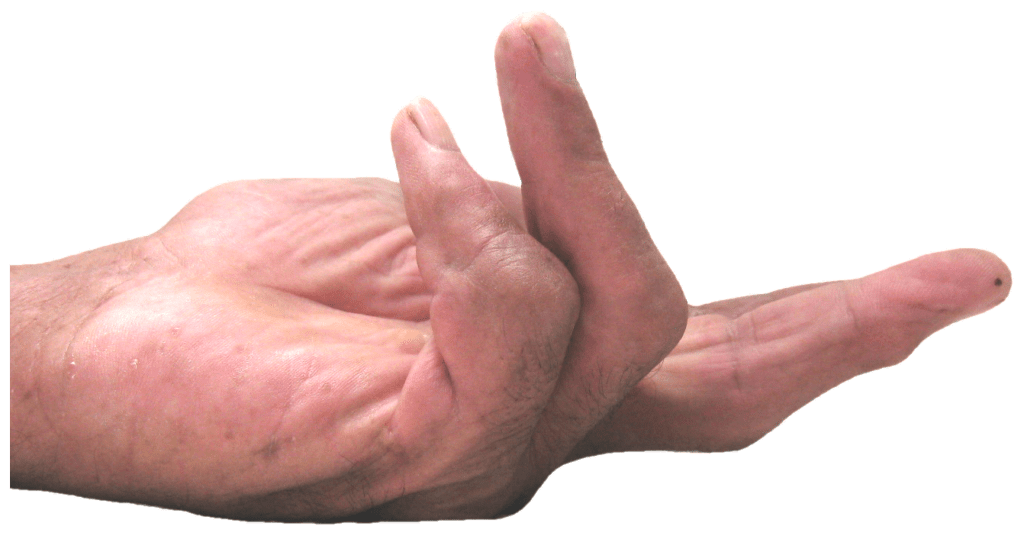The worst and unsolved part of Dupuytren contracture is recontracture after treatment, and then recontracture after retreatment. Most people don’t have this problem, but when they do, the most common joint to have this problem is the small (pinky) finger PIP joint – the joint in the middle of the finger.
Recontracture after a minimally invasive treatment is often treated with fasciectomy (the most common open surgery), but what are the options when there is severe recontracture after fasciectomy? There are 3 traditional options recommended by hand surgeons.
1. Dermofasciectomy. This operation involves removing Dupuytren tissue and old scar tissue and replacing the skin of the front (palm) half of the finger with skin graft. It has the best chance of long term control, but has 3 potential problems:
- The complication rate is higher than for fasciectomy, but this is actually because the complication rate goes up with every redo surgery, and dermofasciectomy is often done as the second or third operation. The fewer operations before dermofasciectomy, the better.
- The previously operated finger may have so much scarring of the blood vessels that when the surgeon releases everything and tries to straighten the finger, it may start to cut off the circulation. If that happens, it limits how much improvement the surgery can give.
- PIP joint (the knuckle you use to knock on a door) contractures greater than 60 degrees tend to stretch out the tendons on the back of the knuckle which straighten the joint and at the same time shrink the ligaments on the front side of the joint. These issues are hard to perfectly correct even with surgery: the finger may be brought back to a straight position in the operating room, but relapse over the weeks that follow into a stiff bend, despite everything the surgeon, patient and therapist can do. Frustrating.
2. PIP joint fusion. Fusion (or arthrodesis) is removing the joint and making the two bones grow together to form one bone. It’s usually done through a cut on the back of the finger, avoiding the battleground of the previous surgery to reduce the risk of nerve and circulatory injuries. The advantage is that the joint will not contract again. The disadvantage is that the joint won’t bend again. Normally, the PIP joint is fused in a partial bend – as bent as it can be without catching on things, which really depends on how bent the next joint back is – the MCP joint (the knuckle you use to punch something). There are 3 issues with this operation:
- There’s no perfect angle for a fused PIP – you have to choose between not catching it on things or not making a fist. Some people see fusing the joint bent as not much better than what they already have.
- It shortens the finger quite a bit, because the flesh on the palm side of the finger won’t stretch out. It doesn’t bring the finger back out to its original length.
- It makes a strange grip, because the joint doesn’t bend where it used to.
Amputation. Only a consideration if requested by the patient because they have just had it with the finger and want to move on. If you’re not at this point, amputation isn’t for you.
A continuation to this post is here.





